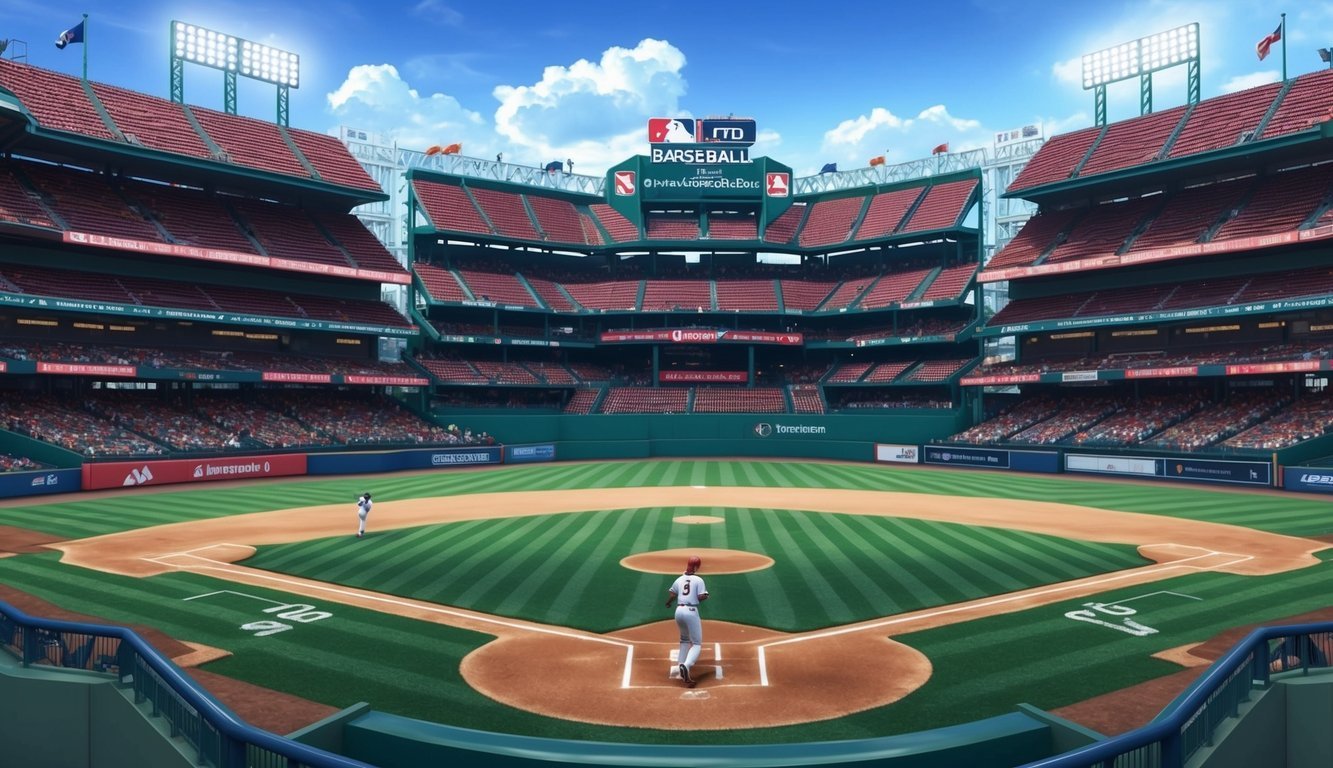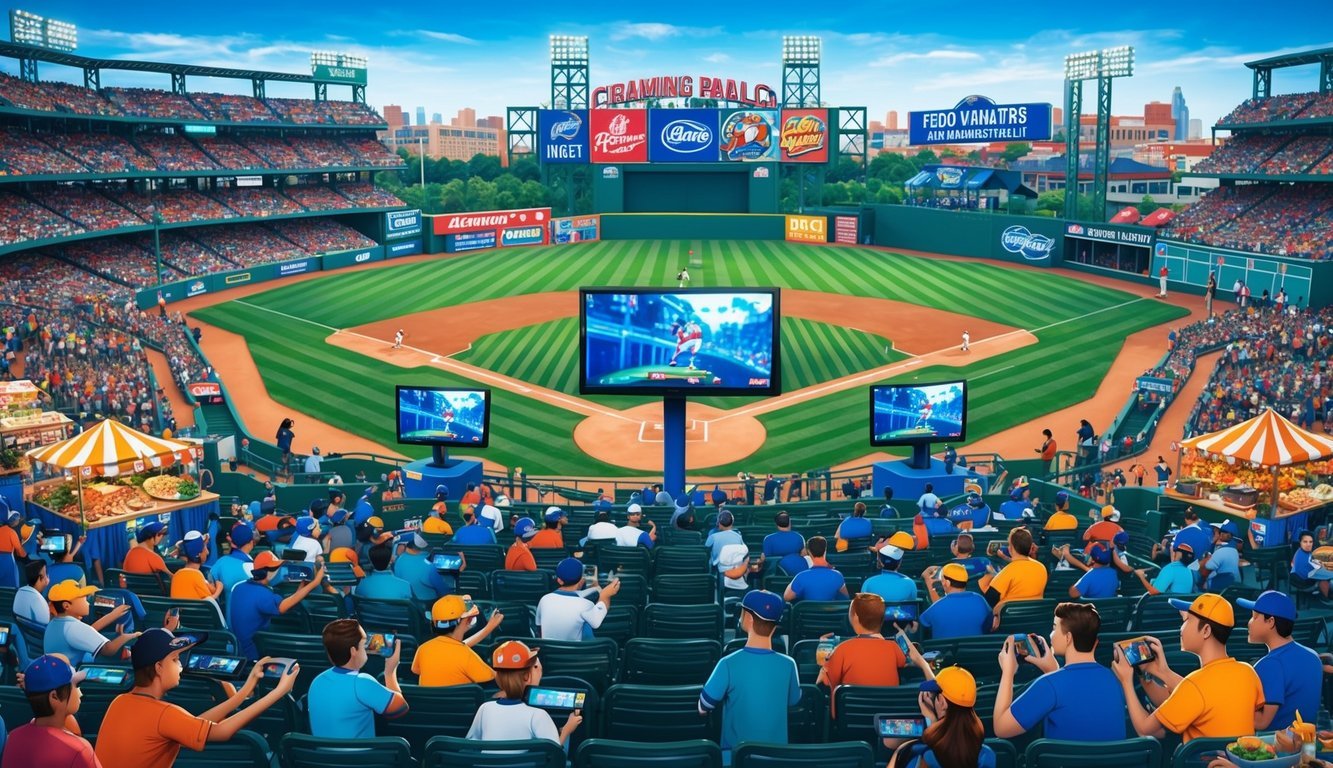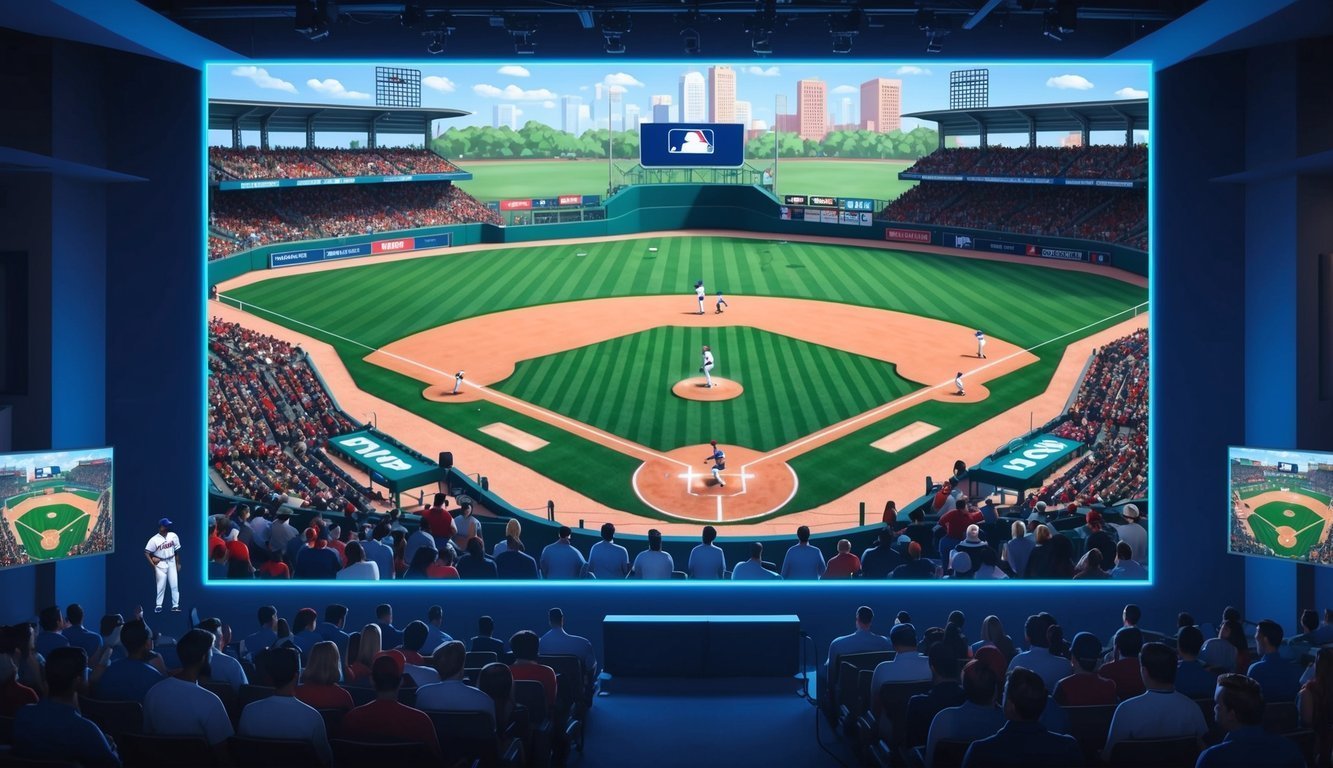Baseball video games have come a long way since their inception in the early 1960s.
From simple pixelated graphics to ultra-realistic simulations, these games have captured the hearts of fans and gamers alike.
They offer a unique way to experience America’s favorite pastime, allowing players to step into the cleats of their favorite athletes or manage their dream teams.
The best baseball video games combine realistic gameplay, stunning graphics, and immersive features that make players feel like they’re on the field. Titles like MLB The Show and Out of the Park Baseball have set new standards for the genre, offering deep gameplay mechanics and authentic experiences.
These games cater to both casual fans looking for quick arcade action and hardcore enthusiasts seeking detailed statistical simulations.
Baseball video games also serve as a gateway for younger generations to learn about and appreciate the sport.
Classics like Backyard Baseball have introduced countless kids to the joys of hitting home runs and pitching strikeouts.
Whether you’re a lifelong fan or new to the game, there’s a baseball video game out there that’s sure to knock it out of the park.
History of Baseball Video Games
Baseball video games have come a long way since their humble beginnings.
From simple pixel graphics to hyper-realistic simulations, the evolution of these games mirrors the advancement of gaming technology over the decades.
Early Beginnings on Consoles Like Atari and NES
The first baseball video games appeared in the late 1970s on consoles like the Atari 2600.
These early titles featured basic graphics and limited gameplay.
Atari’s Home Run, released in 1978, used simple white lines to represent players and a beeping sound for hits.
Nintendo’s NES brought more sophisticated baseball games in the mid-1980s.
Titles like Baseball Stars and RBI Baseball offered improved graphics and more strategic gameplay.
These games introduced player stats and team management features.
Rise of 90s Classics and Arcade Style
The 1990s saw a boom in baseball video games across various platforms.
Sega’s World Series Baseball and Nintendo’s Ken Griffey Jr. Presents Major League Baseball became fan favorites.
Arcade-style games like MLB Slugfest added a fun, over-the-top twist to the sport.
These games featured exaggerated player models and wild gameplay mechanics.
EA Sports entered the scene with Triple Play Baseball, offering improved graphics and gameplay on home consoles.
Advancements in the 2000s and MLB-licensed Titles
The 2000s brought significant improvements in graphics and realism.
MLB-licensed games became more prevalent, with series like MVP Baseball and MLB 2K offering authentic team rosters and stadiums.
These games introduced detailed player models, motion-captured animations, and complex physics engines.
Franchise modes became more in-depth, allowing players to manage teams over multiple seasons.
Online play also emerged, letting fans compete against each other from around the world.
Modern Era and the Impact of MLB The Show
Sony’s MLB The Show series, first released in 2006, has become the gold standard for baseball video games.
Its hyper-realistic graphics and deep gameplay mechanics have set new benchmarks for the genre.
MLB The Show offers incredibly detailed player models, authentic stadiums, and a wide range of game modes.
The series has expanded to include retro uniforms and legendary players from baseball history.
Recent years have seen the introduction of features like cross-platform play and improved player customization options.
The success of MLB The Show has inspired other developers to push the boundaries of baseball video game realism and authenticity.
Gameplay Mechanics
Baseball video games aim to recreate the excitement and strategy of America’s pastime through engaging gameplay elements.
These mechanics bring the sport to life on screen, allowing players to step into the cleats of their favorite athletes.
Controls and User Interface
Most baseball games use intuitive control schemes to simulate batting, pitching, and fielding.
The left stick often controls player movement, while face buttons handle actions like swinging, throwing, and diving catches.
Pitching interfaces vary, with some games using meter systems and others opting for analog stick controls to determine pitch type and location.
User interfaces display crucial information like the count, score, and player stats.
Many games include a pitch tracker to show ball movement and location.
Dynamic camera angles help players track fly balls and line drives during fielding situations.
Pitching, Batting, and Fielding Dynamics
Pitching mechanics typically involve selecting pitch type, location, and power.
Games may include factors like pitcher fatigue and confidence.
Some titles feature unique pitching styles for star hurlers.
Batting relies on timing and pitch recognition.
Players must decide when to swing and where to aim their hits.
Power hitting for home runs often requires precise timing and contact.
Fielding combines player positioning with well-timed button presses for catches and throws.
Games may include diving catches, wall climbs, and relay throws to create highlight-reel moments.
Strategy and Realism in Gameplay
Baseball video games incorporate strategic elements like lineup management, pitching rotations, and in-game decisions.
Players can call for steals, hit-and-runs, or intentional walks.
Some titles include detailed statistics and sabermetrics to guide decision-making.
Realistic physics engines simulate ball flight, taking into account factors like wind and park dimensions.
Player attributes affect performance, with stars excelling in their specialties.
Difficulty settings allow players to tailor the challenge.
Easier modes may offer timing assistance for hits, while harder difficulties demand precise input and strategic thinking to succeed.
Features and Modes

Baseball video games offer a variety of exciting features and modes to keep players engaged.
From managing a team to competing online, these games provide diverse experiences for fans of America’s pastime.
Franchise and Career Modes
Franchise mode lets players step into the shoes of a general manager.
They can draft players, make trades, and guide their team through multiple seasons.
Career mode focuses on a single player’s journey from rookie to MLB superstar.
Some games offer deep customization options for creating players and teams.
Players can adjust stats, appearances, and even design custom uniforms and logos.
Many titles include minor league systems, allowing users to develop prospects and call them up to the big leagues.
This adds depth and realism to the franchise experience.
Multiplayer and Online Play
Baseball games shine in multiplayer settings.
Friends can face off in heated matches, testing their skills against each other.
Online leagues let players join virtual seasons with teams from around the world.
Some titles feature cross-platform play, allowing gamers on different consoles to compete.
This expands the player base and makes it easier to find opponents.
Quick play options are perfect for casual games.
Players can jump into exhibition matches or mini-games without committing to longer modes.
Special Modes: Home Run Derby and Legend Challenges
Home Run Derby modes recreate the excitement of the All-Star break competition.
Players can smash homers as their favorite sluggers or custom characters.
Legend challenges pit gamers against iconic players from baseball history.
These modes often recreate famous moments or let players face off against all-time greats.
Some games include retro modes that capture the look and feel of classic baseball titles.
These nostalgic options appeal to long-time fans of baseball video games.
Graphics, Sound, and Immersion

Modern baseball video games transport players to virtual diamonds through stunning visuals and immersive audio.
These elements work together to create an authentic baseball experience that rivals watching a live game.
Players can customize their teams with gear from the best baseball brands, enhancing realism and personal style.
Advanced gameplay mechanics and AI-driven opponents ensure every match feels dynamic and true to the sport.
Whether playing solo or competing online, these games capture the excitement of baseball with impressive detail.
Visual Fidelity and Ballparks
Baseball games today boast incredible graphical detail.
Player models are highly realistic, with accurate facial features and body types.
Uniforms wrinkle and flutter as players move, while grass and dirt show realistic textures and reactions.
Ballparks are meticulously recreated, from iconic stadiums like Fenway Park to newer venues.
Developers capture unique architectural features, seating arrangements, and even region-specific vegetation.
Dynamic lighting systems simulate different times of day and weather conditions.
Many games now offer 4K resolution and HDR support, bringing out vivid colors and sharp contrasts.
Player animations are smoother than ever, with motion-captured movements for batting stances, pitching deliveries, and fielding actions.
Audio Design: From Commentary to Crowd Noises
Sound plays a crucial role in baseball game immersion.
Commentary teams provide play-by-play and color analysis, often featuring well-known broadcasters.
Their dialogue is context-sensitive, reacting to specific game situations and player performances.
Ambient stadium sounds create a lively atmosphere.
Crowd reactions change based on the game’s events, from the low murmur during pitches to roaring cheers for home runs.
You’ll hear vendors shouting, fans heckling, and the crack of the bat on contact.
On-field audio is equally important.
Games capture the pop of the catcher’s mitt, players calling for fly balls, and coaches shouting instructions.
These details bring the baseball experience to life.
Licensed Music and Soundtracks
Many baseball games feature licensed music to enhance the authentic feel.
Popular tracks play during menu navigation and in-game transitions, mirroring the music heard in real MLB stadiums.
Some titles include team-specific songs and chants, adding to the local flavor of each ballpark.
Players can often customize their walk-up music, just like real MLB stars.
Developers also commission original scores for their games.
These orchestral pieces build excitement during key moments and add emotional weight to career mode cutscenes.
MLB The Show, produced by Sony, is particularly praised for its use of licensed tracks and atmospheric stadium music.
The 2K series, when it was active, also put significant effort into creating an authentic audio landscape for baseball fans.
Community and Culture

Baseball video games have fostered vibrant online communities and significantly impacted gaming culture.
Players connect through shared experiences, competitive play, and a love for America’s pastime.
Influence of Reviews and Ratings
Metacritic scores play a crucial role in shaping player expectations for baseball games.
High-rated titles like MLB The Show series often gain more traction among fans.
Positive reviews can boost a game’s popularity, while critical feedback may lead to improvements in future iterations.
User reviews also carry weight.
Players frequently share their experiences on forums and social media, influencing others’ purchasing decisions.
This feedback loop helps developers understand community preferences and refine their games accordingly.
Online Communities and Esports
Baseball video games have spawned thriving online communities.
Fans gather on platforms like Reddit and Discord to discuss strategies, share custom rosters, and organize tournaments.
These spaces foster camaraderie among players worldwide.
Esports competitions for games like MLB The Show have gained traction.
Professional gamers and baseball enthusiasts compete in organized leagues, showcasing their skills to growing audiences.
These events often feature cash prizes and sponsorships, elevating baseball gaming to a competitive sport in its own right.
Cultural Impact and Cross-platform Engagement
Baseball video games have expanded the sport’s reach beyond traditional fans.
Titles like Backyard Baseball and Wii Sports introduced baseball mechanics to younger audiences.
This created new generations of enthusiasts.
Cross-platform releases have made baseball games more accessible.
Mobile versions of popular franchises allow fans to enjoy the sport on the go.
This widespread availability has helped integrate baseball gaming into daily routines for many players.
The games also serve as virtual baseball encyclopedias.
Detailed player stats and historical information in titles like Out of the Park Baseball educate fans about the sport’s rich history and current stars.
